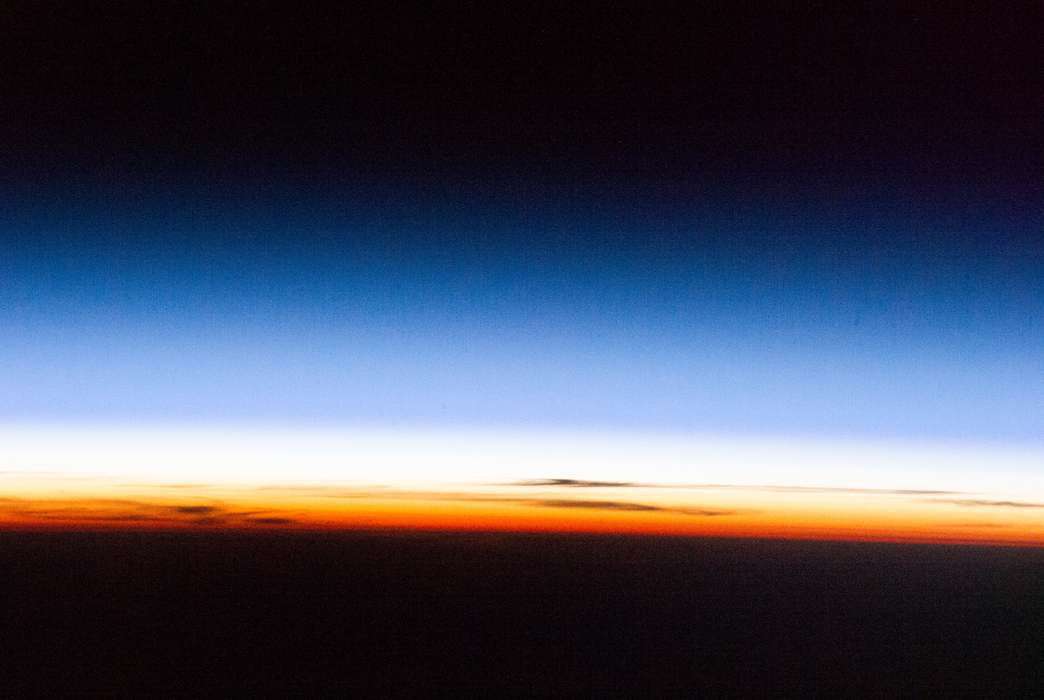Rising concentrations of carbon dioxide and other greenhouse gases are cooling and shrinking the stratosphere and mesosphere, a phenomenon observed for the first time in a new analysis of satellite data.
The shrinking of the atmospheric layers — 150 to 200 meters per decade in the mesosphere alone — will not affect humans or other forms of life anytime soon, according to the lead author of the study, but it is another sign of how human activities are changing the atmosphere.
The paper was published April 20 in the Journal of Atmospheric and Solar-Terrestrial Physics.
The analysis focused primarily on the mesosphere, the third layer of Earth's atmosphere and where most meteors burn up. The mesosphere exists between roughly 50 and 100 kilometers, or 30 and 60 miles, above the surface, and the mesopause at the top is the coldest part of the atmosphere at as low as -100 degrees Celsius, or about -148 degrees Fahrenheit.
Scientific interest in the mesosphere swelled in response to unusual clouds forming in the region, prompting more measurements in the last couple of decades, according to Scott Bailey, a professor of electrical and computer engineering at Virginia Polytechnic and State University and the new paper's lead author.
Now, with more atmospheric observations collected by three satellite instruments, Bailey and his co-authors performed an analysis of temperatures and pressure altitudes over two datasets respectively spanning 22 and 29 years. The data used was for near the Arctic Circle in June and the Antarctic Circle in December, when the mesosphere is at its coldest.
The data was "barely enough" to do the study, Bailey said, but the analysis showed that the mesosphere cooled by 1 to 2 degrees Celsius as a response to greenhouse gas increases. The mesosphere and stratosphere were found to be shrinking for the same reason, meaning that the height of a given atmospheric pressure decreased as the air below it shrunk under lower temperatures.
"One of the reasons I looked at the altitudes was to see if I could get a consistent story between the way the temperatures were seen to evolve and in the way the altitudes were evolving," Bailey said, because cooling trends in the mesosphere have been previously reported. "And it worked; we got a good result and a consistent result between the temperature trends and the altitude trends."
These were the first observations of shrinkage in either part of the atmosphere, though it was previously predicted by earlier modeling. Unlike the nitrogen and oxygen gases that make up most of the atmosphere, greenhouse gases absorb and emit heat in the form of infrared light. Although the gases trap heat in the form of global warming near the surface, those in the middle atmosphere are too far from the ground to absorb heat radiating from the Earth and primarily expel infrared radiation during particle collisions. This causes the air to lose heat, fall in temperature and shrink.
However, the amount the mesosphere shrinks each decade is well less than 0.1% of its overall size, and "there's no danger" to life from these high-altitude changes, according to Bailey.
"It's gonna be a very long time before the atmosphere is small enough to have any effect that we would see as part of society," he said. "It's not any kind of threat to us."
Instead, the new results flesh out how greenhouse gases change the atmosphere beyond near-surface warming, and they can be used to improve scientific models of the atmosphere.
"Being able to see and quantify these effects as a function of altitudes gives us more confidence that we understand fully the role of greenhouse gases in the atmosphere," Bailey said.
Bailey, who credited the broader scientific community for longtime contributions to the study of the mesosphere, said he wants to expand the analysis in future work to a longer time period and across a larger area of the atmosphere, in addition to interrogating atmospheric models and their minor disagreements with the observations.
The study, "Trends in the polar summer mesosphere temperature and pressure altitude from satellite observations," published April 20 in the Journal of Atmospheric and Solar-Terrestrial Physics, was authored by Scott Bailey and Brentha Thurairajah, Virginia Polytechnic and State University; Mark Hervig and Larry Gordley, GATS Inc; David Siskind, Naval Research Laboratory; and James Russell, Hampton University.

chriswalkenspal on May 3rd, 2021 at 14:44 UTC »
"Greenhouse gasses are slowly shrinking..."
Yay! We did it!!
"...the middle atmosphere"
oh.
driedDates on May 3rd, 2021 at 14:35 UTC »
What is the consequence of this ? I’m too stupid sorry.
Radionuclei on May 3rd, 2021 at 13:54 UTC »
Uhhh, could somebody explain to me what this means like im a 5 year old?